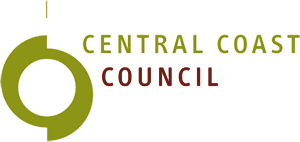Why
The purpose of the Mersey-Leven Food Hub (MLFH) project was to develop a sustainable, regional systems approach that engaged with and strengthened links between key stakeholders to work collaboratively along the local food economy value chain.
The project aimed for:
- Improved availability of local fresh produce – improved local marketing and distribution opportunities for local farmers;
- Improved access to affordable healthy fresh produce for local communities; and
- Improved community connectivity and capacity.
What
The project consisted of three main components:
- Network mapping the local food economy – how the local food systems currently work modelled by nodes (a large node indicated a significant player) and the connectivity between these nodes, see ‘Mersey-Leven Food Hub Network Mapping Report‘
 .
. - Creating an online eCommerce platform -the Site to Bite virtual food hub service model, see https://www.sitetobite.org.au/ and
- Developing the Central Coast Local Food Security Strategy with the community designing and delivering their own meaningful solutions to improve healthy eating. In turn, this can increase demand for healthy food, see ‘Central Coast Local Food Security Strategy’
 .
.
Transport and logistics, value-adding and extending shelf-life were also explored and all components involved aspects of communication and engagement.
Where
The Mersey-Leven catchment is around a 40km radius, with Ulverstone at the centre. This was a regional scale project.
Who
- Healthy Food Access Tasmania (the Heart Foundation) was the project funder and supporter;
- Partners of the project were Devonport City, Latrobe, and Kentish Councils as well as SPROUT;
- The project was supported by the Devonport Food Connection project; and
- Producers, consumers, retailers, individuals, community groups, stakeholders and service providers were involved in the various project components.
How
Network mapping the local food economy built on the work of the Healthy Food Access Tasmania’s interactive map and contributed to:
- Understanding the mechanisms that local fresh fruit and vegetables enter regional communities; and
- Exploring how fresh fruit and vegetables enter ‘food desert’ areas.
The Site to Bite eCommerce Platform sought to make a difference by:
- Creating an alternative pathway to market that enables direct transactions between producers and consumers with produce delivered for example, directly to the home;
- Using innovative technology, the platform has the potential to improve the affordability and accessibility of local food at a fair price to farmers.
The Local Food Security Strategy built on themes identified in the Heart Foundations research:
- Increasing knowledge and skills in growing, preparing, purchasing and cooking food;
- Healthy eating is part of every aspect of community life; and
- Accessible, affordable, healthy food.
The LFSS received endorsement by the Council in June 2016. It was the first food security strategy to be adopted by Local Government in Tasmania. The LFSS is a guiding document and is dynamic and flexible, to allow for inclusion of new initiatives and learnings. The LFSS Review dated February 2021 includes new, place-based actions and can be downloaded below.
Central Coast Local Food Security Strategy
+ Click here to return to the Local Food Security Strategy home page.

